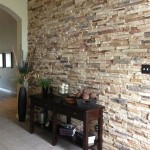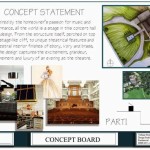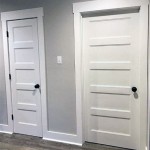Words to Describe Texture in Interior Designing and Painting
Texture, in the realms of interior design and painting, extends beyond the purely visual to engage the tactile senses. It introduces depth, character, and complexity to a space or artwork. The strategic incorporation of texture can transform a flat, uninteresting surface into a dynamic and engaging element. Understanding the diverse vocabulary used to describe texture is crucial for effective communication between designers, artists, and clients.
The objective of this article is to provide a comprehensive lexicon of terms used to describe texture in interior design and painting. This includes exploring the subtle nuances of different textures and their corresponding descriptors, enabling a more precise and articulate discussion of design concepts and artistic visions. Furthermore, it aims to assist in selecting appropriate materials and techniques to achieve desired textural effects.
Texture exists on a spectrum, ranging from smooth and refined surfaces to rough and heavily layered ones. The perception of texture also depends on factors such as lighting, viewing distance, and individual interpretation. A nuanced understanding of the terminology surrounding texture is therefore essential for making informed design and artistic decisions.
Understanding Tactile vs. Visual Texture
Texture can be broadly categorized into two primary types: tactile (or actual) texture and visual (or implied) texture. Tactile texture refers to the physical surface characteristics that can be felt through touch. Examples of tactile textures in interior design include the roughness of exposed brick, the smoothness of polished marble, or the plushness of a velvet sofa. In painting, tactile texture can be achieved through impasto techniques, where thick layers of paint are built up on the canvas to create a three-dimensional effect.
Visual texture, on the other hand, is the illusion of surface texture created through the use of artistic techniques. It is perceived visually but does not have a corresponding physical texture. Artists create visual texture through techniques such as hatching, stippling, and trompe-l'oeil, which manipulate light and shadow to create the appearance of depth and surface variation. In interior design, visual texture can be achieved through the use of patterned wallpapers, textured paint finishes, or strategically placed lighting.
Different words are often used to describe tactile and visual textures. For tactile textures, words like "rough," "smooth," "bumpy," and "soft" are commonly used. For visual textures, terms like "patterned," "stippled," "marbled," and "grained" are more appropriate.
Describing Tactile Textures in Interior Design
The tactile textures incorporated into an interior space significantly influence the overall ambiance and user experience. The selection of materials with distinct tactile qualities should be carefully considered to create a harmonious and inviting environment.
Smooth: A smooth texture is characterized by a lack of any noticeable irregularities or bumps. Examples include polished concrete floors, glass tabletops, and silk fabrics. Smooth textures often evoke feelings of sophistication, cleanliness, and modernity.
Rough: Rough textures possess a pronounced surface irregularity that can be felt upon touching. Examples include exposed brick walls, unfinished wood surfaces, and heavily textured plaster. Rough textures can impart a sense of rusticity, warmth, and authenticity to a space.
Soft: Soft textures are characterized by their pliability and compressibility. Examples include plush carpets, velvet upholstery, and down-filled cushions. Soft textures contribute to a feeling of comfort, relaxation, and luxury.
Hard: Hard textures offer little to no give when touched. Examples include stone countertops, metal fixtures, and ceramic tiles. Hard textures often convey a sense of durability, strength, and permanence.
Bumpy: A bumpy texture features raised areas or protrusions that create an uneven surface. Examples include pebble-dash walls, textured wallpaper, and furniture with raised detailing. Bumpy textures can add visual interest and tactile stimulation to a space.
Coarse: Coarse textures are similar to rough textures but often involve larger, more pronounced irregularities. Examples include burlap fabrics, heavily grained wood, and textured stone. Coarse textures can create a rustic and natural feel.
Fine: Fine textures have subtle irregularities that are barely perceptible. Examples include tightly woven fabrics, smooth leather, and delicately patterned wallpaper. Fine textures add a layer of sophistication and detail without overwhelming the senses.
Woven: Woven textures are created by interlacing threads or strands of material. Examples include carpets, rugs, and textiles. Woven textures can add warmth, depth, and visual interest to a space.
Knitted: Similar to woven textures, knitted textures are created by interlocking loops of yarn or thread. Examples include knitted blankets, throws, and upholstered furniture. Knitted textures offer a feeling of comfort and coziness.
Plush: Plush textures are characterized by their dense, soft pile. Examples include velvet fabrics, shag carpets, and faux fur throws. Plush textures evoke feelings of luxury and indulgence.
Describing Visual Textures in Painting
In painting, visual texture plays a crucial role in creating depth, realism, and emotional impact. Artists employ various techniques to simulate the appearance of different textures on a flat surface.
Smooth: In painting, a smooth texture is achieved by blending colors seamlessly and applying paint in thin, even layers. This creates the illusion of a polished or refined surface.
Rough: A rough texture in painting can be created using impasto techniques, scumbling, or applying paint with a palette knife. This results in a surface with visible brushstrokes and a textured appearance.
Grainy: A grainy texture can be simulated by using dry brush techniques or adding granular mediums to the paint. This creates the appearance of a coarse or uneven surface.
Marbled: Marbled textures are created by swirling different colors together to mimic the appearance of natural marble. This technique often involves using glazes and varnishes to achieve a realistic effect.
Cracked: The illusion of cracked texture can be created by layering different types of paint or using cracking mediums. This creates the appearance of aged or weathered surfaces.
Stippled: Stippling involves applying small dots of paint to create a textured effect. The density and color of the dots determine the overall appearance of the texture.
Hatched: Hatching involves drawing parallel lines to create the illusion of texture and shading. Cross-hatching, where lines intersect, can create a more complex and textured effect.
Gessoed: Gesso is a primer used to prepare surfaces for painting. Applying gesso in layers can create a textured surface, providing a tooth for the paint to adhere to.
Sponged: Applying paint with a sponge can create a textured effect with a porous or irregular appearance. This technique is often used to simulate the look of natural materials such as stone or foliage.
Distressed: Creating a distressed texture involves deliberately damaging or aging the painted surface. This can be achieved through sanding, layering paints, and applying antiquing glazes.
Considerations for Combining Textures
Successfully integrating different textures in interior design and painting requires careful consideration of balance, contrast, and harmony. The interplay of textures should be visually appealing and contribute to the overall aesthetic goals.
Contrast: Contrasting textures can create visual interest and highlight specific elements. For example, pairing a smooth, polished surface with a rough, textured one can draw attention to both elements. However, excessive contrast can be jarring and overwhelming.
Harmony: Harmonious textures create a sense of unity and coherence. This can be achieved by using textures that share similar characteristics, such as tone, color, or pattern. For example, combining different shades of wood with varying grain patterns can create a harmonious and natural feel.
Balance: The distribution of textures within a space or artwork should be balanced to avoid visual imbalance. Too much of one texture can overwhelm the other elements. Consider using texture as an accent rather than the primary focus in certain areas. The scale of the texture in proportion to the objects around it must also be considered.
Overall, the effective use of textural descriptions is key to conveying design intent, artistic vision, and the desired emotional impact of a space or artwork. The vocabulary outlined above provides a starting point for more nuanced and articulate communication about texture in these fields.

Stunning Royal Texture Paint Designs For Hall In 2025

Wall Texture Guide A Complete For Types Techniques Asian Paints

Texture Wall Paint Design Ideas Trending In 2024 Zad Interiors

Stunning Royal Texture Paint Designs For Hall In 2025

20 Wall Texture Design Ideas To Transform Your Home In 2025

Interior Design Styles 101 The Ultimate Guide To Decorating In 2025 Decorilla

Texture Wall Paint Design Ideas Trending In 2024 Zad Interiors

Interior Design Styles 101 The Ultimate Guide To Decorating In 2025 Decorilla

Transform Your Walls With Birla Opus Sand Dune Texture Paint

6 Amazing Home Interior Wall Texture Designs Nipponpaints
Related Posts








